Digital television transition
The digital television transition, also called the digital switchover (DSO), the analog switch-off (ASO), the digital migration, or the analog shutdown, is the process in which older analog television broadcasting technology is converted to and replaced by digital television. Conducted by individual nations on different schedules, this primarily involves the conversion of analog terrestrial television broadcasting infrastructure to digital terrestrial (DTT), a major benefit being extra frequencies on the radio spectrum and lower broadcasting costs, as well as improved viewing qualities for consumers.
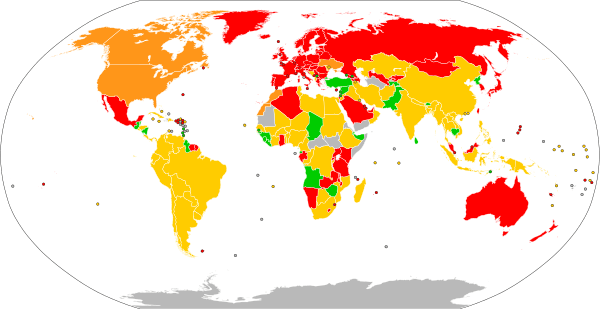
Transition completed; all analog signals terminated
Transition almost completed; most analog signals terminated
Transition in progress; broadcasting both analog and digital signals
Transition has not been planned or started, or is in early stages
No information available
The transition may also involve analog cable conversion to digital cable or internet protocol television, as well as analog to digital satellite television. Transition of land based broadcasting was begun by some countries around 2000. By contrast, transition of satellite television systems was well underway or completed in many countries by this time. It is an involved process because the existing analog television receivers owned by viewers cannot receive digital broadcasts; viewers must either purchase new digital TVs, or converter boxes which change the digital signal to an analog signal or some other form of a digital signal (i.e. HDMI) which can be received on the older TV. Usually during a transition, a simulcast service is operated where a broadcast is made available to viewers in both analog and digital at the same time. As digital becomes more popular, it is expected that the existing analog services will be removed. In most places this has already happened, where a broadcaster has offered incentives to viewers to encourage them to switch to digital. Government intervention usually involves providing some funding for broadcasters and, in some cases, monetary relief to viewers, to enable a switchover to happen by a given deadline. In addition, governments can also have a say with the broadcasters as to what digital standard to adopt - either DVB-T, ATSC, ISDB-T, or DTMB. Governments can also require all receiving equipment sold in a country to support the necessary digital 'tuner'.
The switchover process is being accomplished on different schedules in different countries; in some countries it is being implemented in stages as in Australia, India or Mexico, where each region has a separate date to switch off. In others, the whole country switches on one date, such as the Netherlands.[1] On 3 August 2003, Berlin became the world's first city to switch off terrestrial analog signals.[2] Luxembourg was the first country to complete its terrestrial switchover, in September 2006.[3]
Background and timeline
- 1996: Netherlands (satellite services)
- 1998: United Kingdom (digital terrestrial service)
- 1999: Russia (satellite services)
- 2001: United Kingdom/Republic of Ireland (satellite services), Malaysia (cable television)
- 2002: Faroe Islands, Malaysia (satellite services), Albania (satellite services), Norway (satellite services)
- 2004: Sweden (satellite services)
- 2005: Italy (satellite services), Indonesia (satellite services)
- 2006: Turkey (satellite services),China (satellite services), Luxembourg, Netherlands
- 2007: Finland, Andorra, Sweden, Switzerland
- 2008: Germany, Belgium (Flanders)
- 2009: United States (full power stations), Isle of Man, Denmark, Norway
- 2010: Belgium (Wallonia), Croatia, Estonia, Guernsey, Jersey, Japan (northeastern Ishikawa Prefecture only), Latvia, Luxembourg (cable television and satellite), San Marino, Slovenia, Spain, United Kingdom (Wales)
- 2011: Austria, Canada (major markets), Cyprus, France, Israel, Japan (except earthquake-affected prefectures), Malta, Monaco, United Kingdom (Scotland)
- 2012: Czech Republic, Gibraltar, Republic of Ireland (terrestrial), Italy, Japan (Fukushima, Iwate, Miyagi Prefectures), Lithuania, Saudi Arabia, Qatar, United Arab Emirates, Jordan, Bahrain, Portugal, Slovakia, South Korea, Taiwan, United Kingdom (England and Northern Ireland)
- 2013: Australia, Azerbaijan, Bulgaria, Hungary, North Macedonia, Mauritius, New Zealand, Poland, United Kingdom (cable television)
- 2014: Serbia, Iceland, Namibia, Algeria
- 2015: Belarus, Brunei, Greece, Iran, Morocco (UHF band), Mexico, Moldova, Romania (UHF band), Rwanda, Kenya, Uganda, Ghana, Georgia, United States (class A low-power stations), Mongolia[4]
- 2016: Bermuda, Brazil (Federal District and the city of Rio Verde, Goiás), Chile, China (CCTV), Burundi
- 2017: Brazil (a few metropolitan areas, such as São Paulo and Rio de Janeiro, among others), Philippines (Light Network), Romania (phase 2), Germany Unitymedia, Kyrgyzstan, Brunei[5]
- 2018: Brazil (major markets, including all markets in Rio de Janeiro, São Paulo states), Romania (VHF band),[6] Russia (First Two Multiplex Channels) (Tver Region), Thailand (most channels), Ukraine (most channels), Uzbekistan, Philippines (RJ TV/2nd Avenue),North Korea
- 2019: Bolivia, Republic of Ireland (cable television), Russia (First Two Multiplex Channels) (more regions), Northern Cyprus, Singapore,[7][8] India (phase one), Moldova (Transnistria), Bhutan (cable television),[9] Peru (Lima and Callao), Costa Rica, South Africa, Malaysia[10][11][12]
- 2020: Brazil (other markets), China (regional stations), Panama (Panamá, Colón and Panamá Oeste), Morocco (VHF band), Hong Kong, Macau, Thailand (Channel 3),[13] Venezuela, Moldova (Other territories), Sudan, Côte d’Ivoire, Vietnam,[14] Laos,[15] Pakistan,[16] Senegal
- 2021: Dominican Republic,[17] United States (low-power stations), India (phase two), Colombia,[18] Argentina,[19] Kazakhstan, Paraguay
- 2022: Canada (remaining markets), El Salvador, Indonesia (terrestrial)[20]
- 2023: Cambodia,[21] Cuba, Philippines (remaining markets),[22] India (last phase), Peru (rest of country)
- 2024: Botswana
- 2025: Indonesia (cable television)
Digital standards
Different standards have been developed for the broadcast transmission of digital terrestrial television, comparable to the older analog standards they replace: NTSC, PAL and SECAM. Broadcasters around the world choose and adopt one of these to be the format and technology behind the transmission. The standards are:
- The European-made DVB-T, adopted by most of Europe, Africa, Asia and Oceania
- The American-made ATSC, adopted by much of the Americas and some of Asia and Oceania
- The Japanese-made ISDB-T, adopted by some in Asia, most of South America, and a few in Africa
- The Chinese-made DTMB, adopted by some in Asia and a few in Africa and the Americas
2006 Geneva Agreement
The "RRC-06" agreement in Geneva (hosted by the International Telecommunication Union (ITU)) was signed by delegates from many countries, including most of Europe, Africa and Asia. The agreement set 17 June 2015 as the date after which countries may use frequencies currently assigned for analog television transmission for digital services (specifically DVB-T), without being required to protect the analog services of neighbouring countries against interference. This date was generally viewed as an internationally mandated analog switch-off date, at least along national borders -[23] except for those operating on the VHF band which would be allowed until 17 June 2020.[24]
These deadlines set by the agreement have been difficult to reach in certain regions, like in Africa where most countries missed the 2015 deadline,[25] as well as South East Asia.[26] High upgrade costs are often a reason cited to the slow transition in those regions.
The European Commission, on a different note, has recommended as at 28 October 2009 that digital switchover should be completed by 1 January 2012.[27]
Digital-to-analog converters
Analog only TVs are incapable of receiving over-the-air broadcasts without the addition of a set-top converter box. Consequently, a digital converter box – an electronic device that connects to an analog television – must be used in order to allow the television to receive digital broadcasts. In the United States, the government subsidized the purchase of such boxes for consumers via their coupon-eligible converter box program in 2009, funded by a small part of the billions of dollars brought in by a spectrum auction. The program was managed by the Department of Commerce through its National Telecommunications and Information Administration.
Televisions with integrated digital tuners have been available for a considerable time. This means that the need for a set-top box is usually no longer necessary with a new TV set.
Satellite and cable
Satellite broadcasting switched to digital much earlier than terrestrial broadcasting. The switchover process is much easier for satellite since only changes to the earth station equipment are needed on the transmission side and consumers are already used to having a set top box/decoder. In many places, the satellite switchover was complete before terrestrial switchover was even started. Cable on the other hand would switch off months, if not years after terrestrial would.
In countries where terrestrial is little used, the migration to digital satellite or cable is more realized. For instance, in Switzerland or the UAE, where terrestrial has low usage, the terrestrial switchover was not noticed by the general population. But in countries where terrestrial is the dominant method of watching TV, like Japan, Spain or Thailand, the switchover is a big deal as it affects the majority of the population.
Terrestrial digital switchover by country, at a glance
Transitions completed
Africa


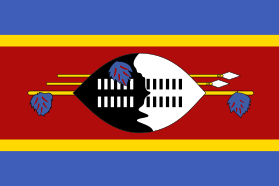
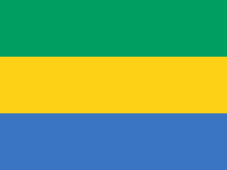




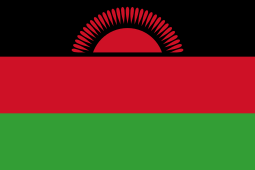
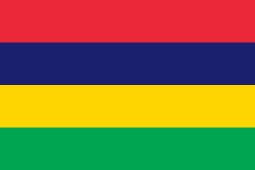






Americas
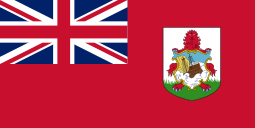


.svg.png)

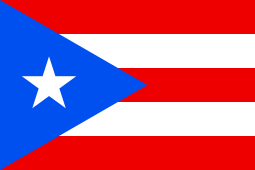
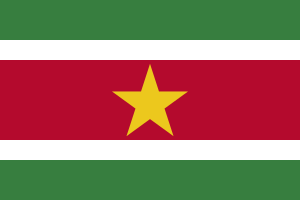

Asia

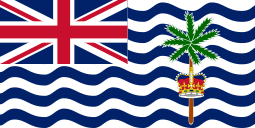




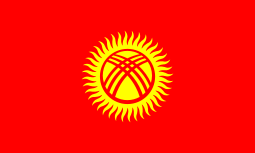










Europe






.svg.png)





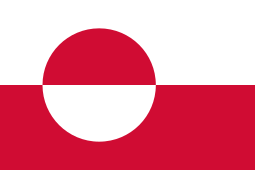

















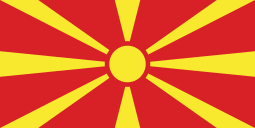
























Oceania

.svg.png)
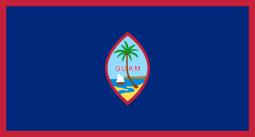

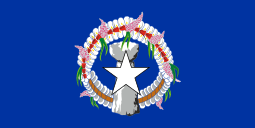

Transitions in progress
Africa

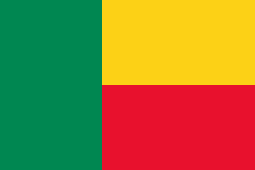



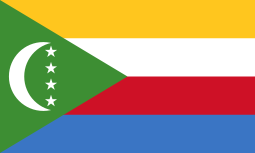
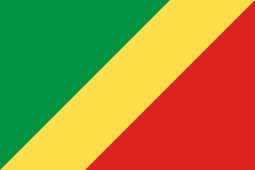



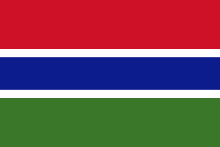

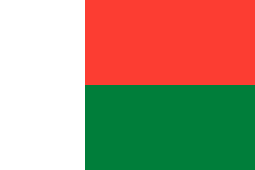



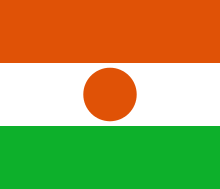

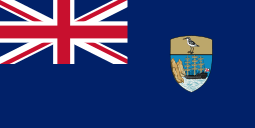



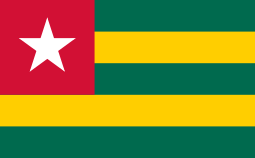

Americas


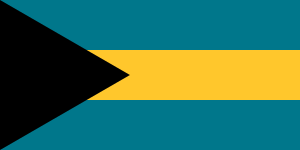



.svg.png)





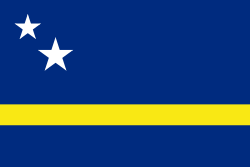



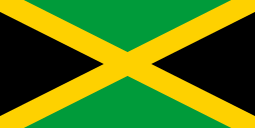



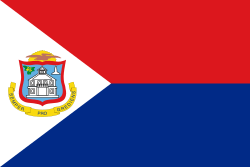
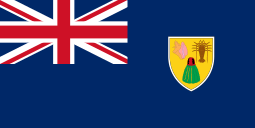



Asia


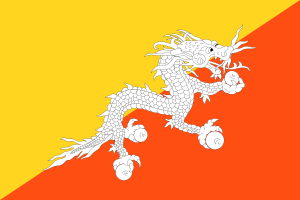

















Europe


Oceania
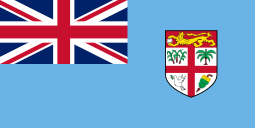
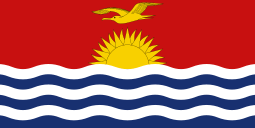
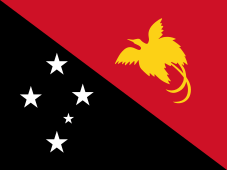



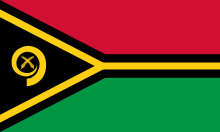
Transitions not yet started or planned
Africa



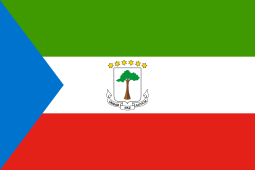



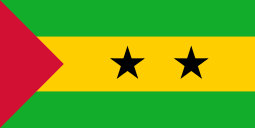

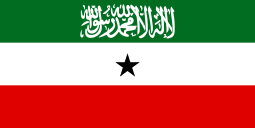
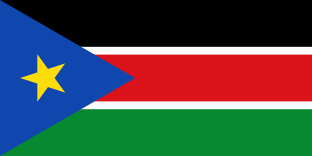

Americas

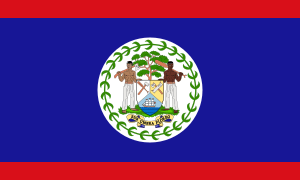
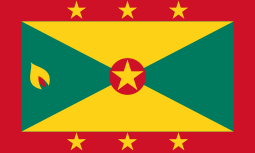

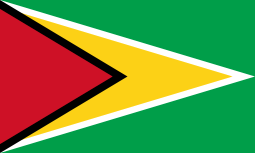




Asia

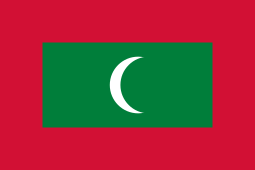







Europe





No information available

.svg.png)



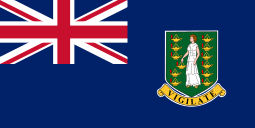

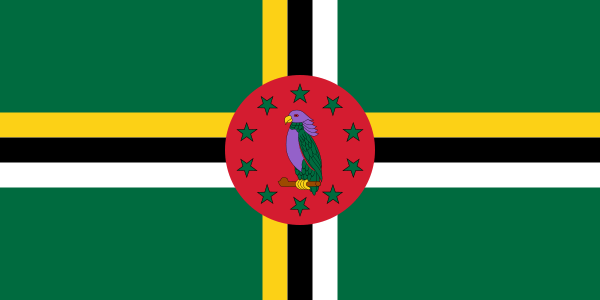
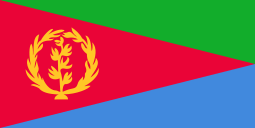



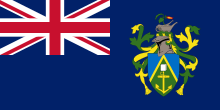

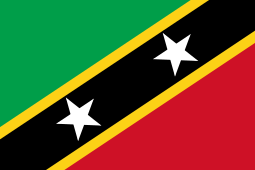





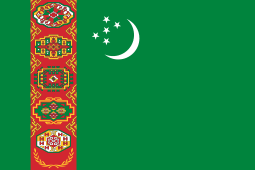
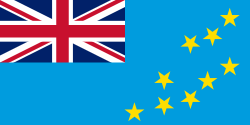


See also
References
- Sterling, Toby (11 December 2006). "Dutch pull plug on free analog TV". msnbc.com. Archived from the original on 26 May 2018. Retrieved 25 May 2018.
- Landler, Mark (3 November 2003). "TECHNOLOGY; German Way To Go Digital: No Dawdling". Archived from the original on 26 May 2018. Retrieved 25 May 2018 – via NYTimes.com.
- van der Sloot, Bart (September 2011). "Mapping Digital Media: How Television Went Digital in the Netherlands". Open Society Foundations. Archived from the original on 14 August 2019. Retrieved 14 August 2019.
- "2016 White Paper – [Table 5] World countries which are completed transition to Digital Terrestrial Television Broadcasting" (PDF). Communications and Information Technology Authority, Mongolia. 2 March 2015. p. 17/50. Archived (PDF) from the original on 9 August 2017. Retrieved 24 July 2019.
- "Penutupan siaran televisyen analog 31 Disember ini" [The closure of analogue television broadcast this 31 December] (in Malay). Pelita Brunei. 23 December 2017. Archived from the original on 25 July 2019. Retrieved 25 July 2019.
- "EXCLUSIV Românii fără acces la televiziune digitală nu mai pot recepționa TVR1 de la 1 mai 2018 - Telecom - HotNews.ro". economie.hotnews.ro. 7 May 2018. Archived from the original on 13 May 2018. Retrieved 13 May 2018.
- "Deadline for end of analogue TV broadcast extended to end-2018: IMDA". channelnewsasia.com. 6 November 2017. Archived from the original on 6 November 2017. Retrieved 7 November 2017.
- "5 things to know about digital TV before analogue TV transmissions cease from 2 Jan". Straits Times. 21 December 2018. Archived from the original on 1 January 2019. Retrieved 1 January 2019.
- "Digital television to replace analogue beginning next year". 29 September 2018. Archived from the original on 5 September 2019. Retrieved 24 September 2019.
- "Gobind: Full shutdown of analogue TV broadcast by third quarter of 2019". The Star. 2 April 2019. Archived from the original on 14 April 2019. Retrieved 19 July 2019.
- Afiq Aziz; Muhd Amin Naharul (27 May 2019). "Govt to switch to digital TV by September". The Malaysian Reserve. Archived from the original on 28 May 2019. Retrieved 19 July 2019.
- "Public to enjoy digital television by October". New Straits Times. 18 May 2019. Archived from the original on 19 July 2019. Retrieved 19 July 2019.
- “26 มี.ค. 63” ดีเดย์ช่อง 3 ยุติอนาล็อก พร้อมเผยแผน Next Move 2020 Archived 1 February 2020 at the Wayback Machine posted by Jenpasit Puprasert Yarmfaojor page
- "Vietnam continues switching off analogue TV signals in 15 provinces". Nhân Dân. 15 August 2017. Archived from the original on 9 December 2017. Retrieved 19 December 2017.
- ZX (29 August 2018). "Laos, Cambodia forge ahead with China on digital TV cooperation". Xinhua News Agency. Archived from the original on 25 July 2019. Retrieved 25 July 2019.
- Amar Ayaz (10 January 2017). "The CPEC plan for Pakistan's digital future". Dawn. Archived from the original on 25 July 2019. Retrieved 25 July 2019.
- http://www.indotel.gob.do/index.php/cgblog/2246/Ejecutivo-pospone-implementacion-de-television-digital
- Bertran, Agustin (8 March 2019). "Colombia posterga el apagón analógico para 2021". NexTV News Latin America. Archived from the original on 19 March 2019. Retrieved 11 March 2019.
- https://www.elintransigente.com/sociedad/2019/3/8/extienden-el-plazo-para-realizar-el-apagon-analogico-de-la-television-546578.html%5B%5D
- "Menkominfo Dorong Percepatan TV Digital". indopos.co.id (in Indonesian). 12 November 2019. Archived from the original on 13 November 2019. Retrieved 13 November 2019.
- Kong Meta (4 January 2019). "Digital TV channels set to air in Kingdom". The Phnom Penh Post. Archived from the original on 25 July 2019. Retrieved 25 July 2019.
- Cabuenas, Jon Viktor D. (14 February 2017). "Gov't wants analog TV switched off by 2023". GMA News Online. Archived from the original on 15 February 2017. Retrieved 15 February 2017.
- "DigiTAG Analog Switch Off Handbook" (PDF). 2008. Archived from the original (PDF) on 28 September 2011. Retrieved 13 May 2009.
- "Terrestrial Frequently Asked Questions (FAQ): Browse by categories". itu.int. Archived from the original on 30 September 2019. Retrieved 30 September 2019.
- Itagaki, T.; Owens, T.; Orero, P. (20 May 2016). "Digital TV accessibility — Analogue switch off in Europe and Africa". 2016 IST-Africa Week Conference. pp. 1–8. doi:10.1109/ISTAFRICA.2016.7530658. ISBN 978-1-9058-2455-7 – via IEEE Xplore.
- "DSO slows down in ASEAN". 12 March 2018. Archived from the original on 29 September 2019. Retrieved 29 September 2019.
- "Official Journal of the European Union". eur-lex.europa.eu. 28 October 2009. Archived from the original on 22 May 2013. Retrieved 13 January 2014.
- "News" (PDF). DVB. Archived (PDF) from the original on 10 May 2012. Retrieved 13 January 2014.
- "Archived copy". Archived from the original on 25 September 2019. Retrieved 25 September 2019.CS1 maint: archived copy as title (link)
- "Cabo Verde espera desligar TV analógica ainda este ano". cmjornal.pt. Archived from the original on 26 September 2019. Retrieved 26 September 2019.
- "Archived copy" (PDF). Archived (PDF) from the original on 24 September 2019. Retrieved 25 September 2019.CS1 maint: archived copy as title (link)
- La, Rédaction (22 May 2015). "Gabon: the migration to digital television costs 60 billion FCFA". Africa Top Success. Archived from the original on 11 December 2017. Retrieved 10 December 2017.
- "TV signals to go digital by June 2015 - MyJoyOnline.com". myjoyonline.com. Archived from the original on 10 March 2016. Retrieved 9 March 2016.
- "Archived copy". Archived from the original on 30 September 2019. Retrieved 30 September 2019.CS1 maint: archived copy as title (link)
- "Rwanda, Tanzania lead in switchover to digital TV". The East African. Archived from the original on 20 December 2019. Retrieved 20 December 2019.
- Weidemann, Rodney (21 February 2005). "Namibia gets digital terrestrial TV". ITWeb. Archived from the original on 30 September 2019. Retrieved 30 September 2019.
- "Welcome digitaltvafrica.com - BlueHost.com". digitaltvafrica.com. Archived from the original on 11 March 2016. Retrieved 9 March 2016.
- "Nigeria's digital migration failure: Lessons from Tanzania". 23 June 2015. Archived from the original on 11 December 2017. Retrieved 20 December 2019.
- "Uganda's Digital TV Migration is complete but where's the EPG Data? | Migration to Digital TV in Uganda – A community blog for geeks with status updates". Archived from the original on 25 September 2019. Retrieved 25 September 2019.
- "Digital Television Migration". mibs.gov.sg. Archived from the original on 10 December 2017. Retrieved 10 December 2017.
- "Digital Terrestrial Television (DTT) - World Map (high resolution)". dtvstatus.net.
- "BBC's All-Digital TV Output Plans "On Course"". bernews.com. 9 March 2016. Archived from the original on 10 December 2017. Retrieved 10 December 2017.
- "Archived copy". Archived from the original on 25 September 2019. Retrieved 25 September 2019.CS1 maint: archived copy as title (link)
- Bustillo, Yony (29 January 2019). "Inicia cuenta regresiva para apagón analógico en sistemas de televisión de Honduras". El Heraldo. Archived from the original on 8 February 2019. Retrieved 23 June 2019.
- "México avanza hacia el Apagón analógico" (in Spanish). Generaccion.com. 3 September 2010. Archived from the original on 6 October 2011. Retrieved 1 August 2012.
- "México posterga 'apagón analógico'" (in Spanish). Univision. 1 June 2013. Archived from the original on 28 September 2013. Retrieved 11 June 2013.
- "Posible, concluir apagón analógico en 2015: Cofetel" (in Spanish). El Economista. 3 June 2013. Archived from the original on 15 June 2013. Retrieved 11 June 2013.
- Labaton, Stephen (5 June 2009). "Millions Still Not Ready for Digital TV". Archived from the original on 26 September 2019. Retrieved 26 September 2019 – via NYTimes.com.
- "BNamericas - Argentina joins Colombia in pushing back dig..." BNamericas.com. Archived from the original on 26 September 2019. Retrieved 26 September 2019.
- "Invoering digitale televisie zorgt voor meer tv-plezier • Surgoed Makelaardij NV". Surgoed Makelaardij NV. Archived from the original on 25 September 2019. Retrieved 25 September 2019.
- "Get BFBS | BFBS Welfare". 15 April 2019. Archived from the original on 15 April 2019.
- "Terrestrial digital broadcasting: analog broadcasts end in Suzu, Ishikawa". Mainichi Shimbun. 24 July 2010. Archived from the original on 1 May 2013. Retrieved 24 July 2010.
- 岩手、宮城、福島の3県のアナログ放送は平成24年3月31日に終了しました [Analog broadcast ended in Iwate, Miyagi and Fukushima on 31 March 2012 (year Heisei 24)] (in Japanese). Tokyo: Ministry of Internal Affairs and Communications. 31 March 2012. Archived from the original on 20 March 2012. Retrieved 1 April 2012.
- "Broadcasting Digitization Schedule". DPA: The Association for Promotion of Digital Broadcasting. Archived from the original on 10 December 2009. Retrieved 16 November 2009.
- "デジアナ変換が4月末で"混乱なく"完全終了。テレビはどれだけ売れた?". AV Watch. 18 May 2015. Archived from the original on 9 May 2019. Retrieved 20 December 2019.
- Moseychuk, Vitaly. "Kyrgyzstan Switches TV Broadcasting to Digital Format | Mediasat English". Archived from the original on 24 September 2019. Retrieved 24 September 2019.
- Goh Thean Eu (16 June 2014). "Telco Deep Dive: Two sides of Malaysia's Digital TV story". Digital News Asia. Archived from the original on 19 July 2019. Retrieved 19 July 2019.
- "Syed Mokhtar company wins digital Terrestrial TV tender". Digital News Asia. 8 January 2014. Archived from the original on 19 July 2019. Retrieved 19 July 2019.
- "PM launches myFreeview digital broadcast, 4.2m decoders to be given free". The Malay Mail. 6 June 2017. Archived from the original on 19 July 2019. Retrieved 19 July 2019.
- Alexander Wong (21 July 2019). "Analogue TV switched off in Langkawi, nationwide switchover to happen later". SoyaCincau. Archived from the original on 24 July 2019. Retrieved 24 July 2019.
- Nic Ker (6 August 2019). "Malaysia switching to digital TV transmission, govt to stop analogue transmission when "prepared"". SoyaCincau. Archived from the original on 6 August 2019. Retrieved 6 August 2019.
- "MCMC: Malaysia switching to full digital TV broadcast by 31 Oct". The Malay Mail. 24 September 2019. Archived from the original on 25 September 2019. Retrieved 25 September 2019.
- Alexander Wong (25 September 2019). "Malaysia to turn off analogue TV completely on 31 Oct". SoyaCincau. Archived from the original on 25 September 2019. Retrieved 25 September 2019.
- Alexander Wong (16 October 2019). "West Malaysia has completely switched over from Analogue to Digital TV". SoyaCincau. Archived from the original on 16 October 2019. Retrieved 16 October 2019.
- "Malaysia Beralih Kepada Siaran TV Digital Secara Sepenuhnya Pada 31 Oktober 2019" [Malaysia Turns Into Digital TV Broadcast On 31 October 2019] (PDF) (Press release) (in Malay). Malaysian Communications and Multimedia Commission. 2 April 2019. Archived from the original (PDF) on 1 November 2019. Retrieved 1 November 2019.
- "Sabah and Sarawak switch to digital TV". The Star. 31 October 2019. Archived from the original on 31 October 2019. Retrieved 1 November 2019.
- "Now entire nation enjoys digital TV broadcast". Bernama. The Borneo Post. 1 November 2019. Archived from the original on 1 November 2019. Retrieved 1 November 2019.
- "Negara ucap selamat tinggal kepada TV analog" [The country says goodbye to analogue TV]. Bernama (in Malay). Astro Awani. 1 November 2019. Archived from the original on 1 November 2019. Retrieved 1 November 2019.
- 경상북도 울진군, 오늘부터 '디지털 송출' 시작 (in Korean). sbs.co.kr. 20 January 2010. Archived from the original on 4 September 2014. Retrieved 11 June 2013.
- "South Korea to continue analog TV near border". North Korea Tech. 27 December 2012. Archived from the original on 27 May 2013. Retrieved 11 June 2013.
- "MCI's Addendum to the President's Address". Mci.gov.sg. Archived from the original on 24 January 2016. Retrieved 21 January 2016.
- "A reminder to Singapore households: Switch to digital TV". Channel NewsAsia. 7 September 2018. Archived from the original on 2 January 2019. Retrieved 2 January 2019.
- Supatrasit Suansook (2015). "Digital Terrestrial Television in Thailand: Technical Aspects" (PDF). National Broadcasting and Telecommunications Commission of Thailand. Archived (PDF) from the original on 25 July 2019. Retrieved 25 July 2019.
- John Fernquest (24 March 2014). "Digital TV: What do I need to know?". Bangkok Post. Retrieved 25 July 2019.
- Theadora Mills (28 June 2018). "In rural areas of Thailand, local TV is going digital". ITU News. Archived from the original on 25 July 2019. Retrieved 25 July 2019.
- "Albanian digital TV concerns mount". Broadband TV News. 7 January 2016. Archived from the original on 24 September 2019. Retrieved 24 September 2019.
- "Archived copy" (PDF). Archived (PDF) from the original on 16 August 2019. Retrieved 23 September 2019.CS1 maint: archived copy as title (link)
- "Andorra fa el salt a la TDT" (in Catalan). Vilaweb. Archived from the original on 13 February 2008. Retrieved 10 March 2008.
- "DVB-T: Zeitplan". Digitales Fernsehen Förder GmbH. June 2008. Archived from the original on 2 July 2008. Retrieved 23 June 2008.
- "analog terrestrial TV switch-off in the EU - briefing – EUbusiness.com - EU Business News". Eubusiness.com. Archived from the original on 2 April 2012. Retrieved 1 August 2012.
- "Azerbaijan to switch over to digital TV 'very soon'". News.Az. 27 September 2011. Archived from the original on 6 October 2011. Retrieved 1 August 2012.
- "In 2013, Azerbaijan will fully switch to digital TV - Minister". News.Az. 3 December 2012. Retrieved 10 December 2012.
- "Комисия За Регулиране На Съобщенията". Crc.bg. Archived from the original on 27 August 2009. Retrieved 12 August 2009.
- Webfactory www.webfactory.ie. "Digital Video Broadcasting — Bulgaria". DVB. Archived from the original on 15 August 2009. Retrieved 12 August 2009.
- "Bulgarian DTT woes continue". Broadband TV News. 12 July 2012. Archived from the original on 10 September 2013. Retrieved 5 September 2012.
- "Аналоговият ТВ сигнал спрян окончателно, 100 000 са без телевизия". Dnes.dir.bg.
- "Archived copy". Archived from the original on 7 October 2010. Retrieved 2 December 2010.CS1 maint: archived copy as title (link)
- "Nyt TV-signal fejres med lysshow". TVTid på TV2. Archived from the original on 5 November 2009. Retrieved 1 November 2009.
- "Ændringer i din tv-pakke". YouSee. Archived from the original on 22 December 2015. Retrieved 14 December 2015.
- "Analog satellit TV". ullits.dk. Archived from the original on 9 November 2013. Retrieved 29 September 2019.
- "Grønland digitaliserer tv-sendenet". Computerworld. 23 May 2002. Archived from the original on 25 September 2019. Retrieved 25 September 2019.
- "Digitalt tv dækker snart hele landet". KNR. Archived from the original on 26 October 2016. Retrieved 20 December 2019.
- "DVB - Digital Video Broadcasting - Faroe Islands". 16 January 2013. Archived from the original on 16 January 2013.
- "Digi-tv esillä ympäri maata". Finnish Ministry of Communications. Archived from the original on 27 September 2007. Retrieved 12 August 2007.
- "Archived copy". Archived from the original on 3 September 2017. Retrieved 3 September 2017.CS1 maint: archived copy as title (link)
- Стоянова, Алиса. "Грузия пока не отключает аналог | Mediasat". Archived from the original on 2 July 2015. Retrieved 1 July 2015.
- "Digea". digea.gr. Archived from the original on 8 December 2019. Retrieved 8 December 2019.
- "Digea". digea.gr. Archived from the original on 2 September 2018. Retrieved 8 December 2019.
- "Map coverage Broadcast Centres". Directorate General of Technology and Development. Archived from the original on 8 February 2015. Retrieved 2 February 2015.
- "Announcement". Digea. December 2014. Archived from the original on 6 February 2015.
ANNOUNCEMENT Saturday, 27 December 2014 the morning will begin digital broadcasting (while stopping analogue) of the centers: Agios Athanasios Water Tower Gate Tsotyli Vounasa Royal Polygyros Delvinaki Curse Granitsopoula Igoumenitsa Korfovouni Amfilochia Those viewers covered by these centers will need to have receiver (TV or decoder) that supports MPEG4 technology and coordinate the morning of 27 December the new frequencies. Those viewers already receive terrestrial digital TV signal need not make any action.
- "Digea Press release 26/02/15" (in Greek). Archived from the original on 8 December 2019.
- "Digital Television". Icelandic National Broadcasting Service. Archived from the original on 26 June 2015. Retrieved 24 June 2015.
- "Turning off the analogue distribution". Icelandic National Broadcasting Service. 2 February 2015. Archived from the original on 3 April 2015. Retrieved 2 February 2015.
- "Watershed in Icelandic telecommunications history". Vodafone. 2 February 2015. Archived from the original on 15 March 2015. Retrieved 2 February 2015.
- "Home - Going Digital". DigitalTelevision.ie. 4 June 2012. Archived from the original on 4 October 2011. Retrieved 1 August 2012.
- "Digital switchover takes place". The Irish Times. 24 October 2012. Archived from the original on 24 October 2012. Retrieved 24 October 2012.
- "analog Deflectors still in service until 31 December". boards.ie. Archived from the original on 13 January 2014. Retrieved 13 January 2014.
- Hooper, John (13 October 2006). "Silvio Berlusconi Italy digital TV Mediaset Prodi RAI". Archived from the original on 29 September 2019. Retrieved 29 September 2019 – via www.theguardian.com.
- "EU court strikes Berlusconi's media empire". 29 July 2011. Archived from the original on 29 September 2019. Retrieved 29 September 2019.
- Traisci, Francesco Paolo. "I diritti audiovisivi: una storia lunga e piena di colpi di scena – 7. Satellite e digitale terrestre". Archived from the original on 20 September 2019. Retrieved 20 September 2019.
- Italradio, Portale. "Satellite: RAI International lascia l'analogico per il digitale". portale.italradio.org.
- "Паром в Моловате: между двумя Молдовами". 1News.md | Информационный Портал. Archived from the original on 28 September 2019. Retrieved 28 September 2019.
- "Сайт Государственной службы связи, информации и СМИ ПМР - Цифровое эфирное телевещание". 4 November 2013. Archived from the original on 4 November 2013.
- "О трансляции телевизионных программ в стандарте DVB-T2". minregion.gospmr.org. Archived from the original on 28 September 2019. Retrieved 28 September 2019.
- "В ближайшие два года Приднестровье планирует полностью перейти на цифровое телевидение | Новости Приднестровья".
- "Digitalization of all Macedonian televisions by 2013". Ministry of Information Society and Administration. 14 March 2012. Archived from the original on 3 December 2013. Retrieved 15 March 2012.
- "Yayın Yüksek Kurulu". kktcyyk.org. Archived from the original on 30 September 2019. Retrieved 30 September 2019.
- Webfactory http://www.webfactory.ie. "Digital Video Broadcasting - Malta". DVB. Archived from the original on 24 August 2012. Retrieved 1 August 2012.
- "Montenegro shuts down the analogue signal". CDM. Archived from the original on 29 September 2015. Retrieved 17 June 2015.
- "Ziggo stopt met analoge tv en gaat volledig digitaal". NOS (in Dutch). 8 March 2018. Archived from the original on 8 March 2018. Retrieved 29 March 2018.
- "10 jaar digitale satelliet televisie". satellitemagazine.com. Archived from the original on 20 September 2019. Retrieved 20 September 2019.
- "Norway completes ASO". BroadbandTVNews.com. Archived from the original on 11 December 2009. Retrieved 14 December 2009.
- "Slutt på analog satellittdistribusjon". NRK. 18 March 2002.
- "750 mil clientes NOS com TV sem box terão acesso a 110 canais sem mais custos". Dinheiro Vivo (in Portuguese). 10 October 2017. Archived from the original on 31 July 2018. Retrieved 31 July 2018.
- "Trecerea completă la emisia digital terestră a TVR este legală". TVR.RO. Archived from the original on 13 May 2018. Retrieved 13 May 2018.
- Interfax (14 October 2019). "Interfax". Interfax. Archived from the original on 16 October 2019. Retrieved 17 October 2019.
- "Pilot mreža". JP Emisiona tehnika i veze. Archived from the original on 27 September 2013. Retrieved 24 June 2013.
- "Archived copy". RTS. Archived from the original on 15 April 2015. Retrieved 14 April 2015.CS1 maint: archived copy as title (link)
- (in Spanish) Disposición adicional primera del Real Decreto 944/2005, de 29 de julio, published in BOE del 30 de julio Archived 27 February 2008 at the Wayback Machine
- "Sista analoga TV-nätet släckt" (in Swedish). Sydsvenskan. 15 October 2007. Archived from the original on 18 September 2015. Retrieved 18 July 2015.
- "Digital-TV". mimersbrunn.se.
- "Analog-TV noch bis 2017: Preisüberwacher hält analoges TV am Leben". Blick. 21 December 2012. Archived from the original on 13 August 2017. Retrieved 16 July 2017.
- "SRG to shut down Swiss digital-terrestrial network". Digital TV Europe. 6 September 2018. Archived from the original on 23 September 2019. Retrieved 25 September 2019.
- "First digital TV switch date set". BBC News. 15 March 2007. Archived from the original on 17 March 2007. Retrieved 24 April 2007.
- "When". digitaluk.co.uk. 6 April 2011. Archived from the original on 8 September 2008. Retrieved 1 August 2012.
- "Northern Ireland". digitaluk.co.uk. Archived from the original on 30 July 2012. Retrieved 1 August 2012.
- "Gibraltar officially launches DAB+ and Digital TV networks". Archived from the original on 25 September 2019. Retrieved 25 September 2019.
- "Douglas transmitter group (Border region) – Arqiva confirms completion of Digital Switch Over" (Press release). arqiva. Archived from the original on 24 January 2016. Retrieved 2 February 2016.
- "Digital TV Switchover Australia: Digital TV timetable by region". Australian Government Digital Switchover Taskforce. 26 October 2012. Archived from the original on 18 October 2012. Retrieved 29 November 2012.
- "DTV: Get the Picture". kuam.com. Archived from the original on 26 September 2019. Retrieved 26 September 2019.
- "When is my area going digital? - Going Digital". New Zealand Ministry for Culture and Heritage. Archived from the original on 17 October 2011. Retrieved 17 July 2011.
- "Mmegi Online ::". Mmegi Online. Archived from the original on 28 May 2016. Retrieved 24 December 2019.
- "Burundi : la télévision numérique terrestre sera lancée en avril 2014". french.china.org.cn. Archived from the original on 26 September 2019. Retrieved 26 September 2019.
- "Le passage de l'analogique au numérique dans l'impasse". Burundi Eco. Archived from the original on 26 September 2019. Retrieved 20 December 2019.
- "Archived copy". Archived from the original on 13 August 2019. Retrieved 26 September 2019.CS1 maint: archived copy as title (link)
- "Archived copy" (PDF). Archived (PDF) from the original on 24 September 2019. Retrieved 24 September 2019.CS1 maint: archived copy as title (link)
- "Congo – Médias : Le projet de déploiement de la TNT au Congo, sur de bons rails". Les Echos du Congo Brazzaville. Archived from the original on 28 September 2019. Retrieved 28 September 2019.
- "Médias : la TNT bientôt effective au Congo Brazzaville - Journal de Brazza". 13 June 2018. Archived from the original on 13 June 2018.
- "Canal+ Group's Easy TV expands to Kinshasha | Broadcast | News | Rapid TV News". rapidtvnews.com. Archived from the original on 26 September 2019. Retrieved 26 September 2019.
- "Archived copy". Archived from the original on 23 September 2019. Retrieved 25 September 2019.CS1 maint: archived copy as title (link)
- Balderston, Michael. "GatesAir Wins Ethiopia TV Transition Project". TvTechnology. Archived from the original on 30 July 2019. Retrieved 20 December 2019.
- "Archived copy". Archived from the original on 25 September 2019. Retrieved 25 September 2019.CS1 maint: archived copy as title (link)
- "Lancement de la Télévision numérique terrestre (TNT)". Akody. Archived from the original on 12 February 2019. Retrieved 10 February 2019.
- Rasoamanana, Vola. "Madagascar : offre de télévision numérique par la société chinoise Star Times au pays". Madagascar - Actualités de la diaspora malgache en France: reportages, événements malgaches, interviews, informations. Archived from the original on 26 September 2019. Retrieved 26 September 2019.
- "Mali - TNTSAT Africa Gets Authorization From Media Regulator Haut Autorite De Communication to Start Digital Transition". allAfrica.com. 14 February 2018. Archived from the original on 25 September 2019. Retrieved 25 September 2019.
- "Archived copy". Archived from the original on 30 September 2019. Retrieved 30 September 2019.CS1 maint: archived copy as title (link)
- Only Al Aoula is available with very low power analog transmitters.
- "Switching from analogue to digital television". Archived from the original on 29 April 2018. Retrieved 28 April 2018.
- "TNT, comment ça marche". L'Economiste (in French). 19 June 2015. Archived from the original on 5 May 2018. Retrieved 5 May 2018.
- "Moçambicanos ainda à espera de recetores da televisão digital | DW | 28.07.2016". DW.COM. Archived from the original on 26 September 2019. Retrieved 20 December 2019.
- "Arranca no país emissão da televisão digital". incm.gov.mz. Archived from the original on 26 September 2019. Retrieved 26 September 2019.
- "La Télévision Numérique Terrestre (TNT) est désormais une réalité au Niger | ANP". anp.ne. Archived from the original on 14 September 2019. Retrieved 24 December 2019.
- "Niger : la migration vers la télévision numérique terrestre se concrétise (PAPIER GENERAL) - Xinhua | Actualités Chine & Afrique". french.xinhuanet.com. Archived from the original on 28 September 2019. Retrieved 28 September 2019.
- "Archived copy". Archived from the original on 16 July 2015. Retrieved 15 July 2015.CS1 maint: archived copy as title (link)
- Bridge, The Broadcast. "GatesAir Helps Accelerate Nigerian Digital Switchover Initiative - The Broadcast Bridge - Connecting IT to Broadcast". thebroadcastbridge.com. Archived from the original on 25 September 2019. Retrieved 25 September 2019.
- "Archived copy". Archived from the original on 27 April 2014. Retrieved 25 September 2019.CS1 maint: archived copy as title (link)
- Doherty, Adetomi. "Senegal Set To Switch Off All Analog Signal In September Next Year". broadcastingandmedia.com. Archived from the original on 24 September 2019. Retrieved 24 September 2019.
- McLeod, Duncan (3 February 2016). "Finally, digital TV era arrives in SA". TechCentral.co.za. Archived from the original on 9 March 2016. Retrieved 18 September 2016.
- Odendaal, Natasha (28 October 2016). "Analogue transmission switch-off starts in Northern Cape as South Africa progresses digital migration". Engineeringnews.co.za. Engineering News. Archived from the original on 10 March 2018. Retrieved 23 February 2018.
- van Zyl, Gareth (17 June 2015). "SA joins list of losers on digital migration". Fin24.com. Archived from the original on 8 March 2018. Retrieved 7 March 2018.
- Herman, Paul (23 January 2018). "Communications department needs R6.6bn to complete digital migration by 2019 deadline". News24.com. Archived from the original on 24 February 2018. Retrieved 23 February 2018.
- "South Africa vows fast action on digital TV". advanced-television.com. Archived from the original on 30 September 2019. Retrieved 30 September 2019.
- "Archived copy". Archived from the original on 10 March 2016. Retrieved 1 July 2017.CS1 maint: archived copy as title (link)
- "Archived copy" (PDF). Archived (PDF) from the original on 25 September 2019. Retrieved 25 September 2019.CS1 maint: archived copy as title (link)
- Cassia, Fernando (2 December 2007). "Brazil starts HDTV transmissions". The Enquirer. p. 1. Archived from the original on 13 December 2007. Retrieved 3 December 2007.
- "Conheça os planos das emissoras para a TV digital" (in Portuguese). G1. 13 November 2007. p. 1. Archived from the original on 14 December 2007. Retrieved 19 November 2007.
- Cronograma de desligamento da TV analógica no Brasil Archived 17 July 2014 at the Wayback Machine Teleco. Accessed on 15 July 2014.
- "2015 Same Strategy, Different Path". Cbc.radio-canada.ca. 4 April 2012. Archived from the original on 5 June 2012. Retrieved 1 August 2012.
- Digital Television (DTV) Transition Schedule - Updated April 2017 - Industry Canada
- "Cayman 27 going digital | Cayman Compass". Archived from the original on 26 September 2019. Retrieved 26 September 2019.
- "Archived copy". Archived from the original on 28 September 2019. Retrieved 28 September 2019.CS1 maint: archived copy as title (link)
- Bertran, Agustin (28 June 2019). "CNTV finaliza primera etapa de entrega de concesiones para TDT en Chile". NexTV News Latin America. Archived from the original on 28 September 2019. Retrieved 28 September 2019.
- Granma, Las cajas decodificadoras y el apagón analógico Archived 21 September 2014 at the Wayback Machine, 17 December 2014
- "Archived copy". Archived from the original on 26 September 2019. Retrieved 26 September 2019.CS1 maint: archived copy as title (link)
- "FAQ". btnp.org. Archived from the original on 28 September 2019. Retrieved 28 September 2019.
- Joe, Just (5 October 2010). "Dominican Republic: Digital TV in 2015 · Global Voices". Archived from the original on 12 October 2015. Retrieved 28 September 2015.
- Horbuz, Anabelia (2 October 2018). "Ecuador: Three out of ten homes have digital TV set". Nextv News. Archived from the original on 25 September 2019. Retrieved 25 September 2019.
- El Diario de Hoy, El Salvador prepara el salto a la TV Digital Archived 15 July 2010 at the Wayback Machine, 11 July 2010
- "Digital switchover sooner rather than later, says Green - Broadcasting Commission says 2021 only an indicative date for change". jamaica-gleaner.com. 9 July 2017. Archived from the original on 25 September 2019. Retrieved 25 September 2019.
- "Anuncian apagón analógico en la televisión panameña | La Prensa Panamá". prensa.com. 30 September 2019. Archived from the original on 1 October 2019. Retrieved 20 December 2019.
- "Archived copy". Archived from the original on 3 September 2018. Retrieved 3 September 2018.CS1 maint: archived copy as title (link)
- Panamá, GESE-La Estrella de. "Apagón analógico podría ser en el año 2018". La Estrella de Panamá.
- Borja, Flavia (22 February 2016). "Apagón analógico: cómo prepararse para el 2020". ABC.com.py (in Spanish). Archived from the original on 4 February 2018. Retrieved 12 February 2018.
- News - DVB
- "BTP-SXM publishes LTE consultation". commsupdate.com.
- "Turks and Caicos Weekly News". tcweeklynews.com. Archived from the original on 28 September 2019. Retrieved 28 September 2019.
- "People's Television Network". ptvtci.com. Archived from the original on 28 September 2019. Retrieved 28 September 2019.
- "Digital Television". Federal Communications Commission. 28 February 2013. Archived from the original on 24 September 2008.
- "Suspension of Sept. 1, 2015 Digital Transition Date for LPTV/Translator". Federal Communications Commission. 24 April 2015. Archived from the original on 21 May 2015. Retrieved 2 May 2015.
- Post-Auction Rules and Procedures for LPTV and TV Translator Stations Archived 2 February 2018 at the Wayback Machine Wiley Rein LLP, 17 May 2017
- Apagón analógico en stand by Archived 16 November 2018 at the Wayback Machine El Observador, 3 August 2015 (in Spanish).
- "¿Cómo está la Televisión Digital Abierta en Venezuela?". El Universal. 22 February 2018. Archived from the original on 12 October 2018. Retrieved 24 December 2019.
- "Archived copy". Archived from the original on 3 March 2016. Retrieved 24 September 2019.CS1 maint: archived copy as title (link)
- http://btv.portal.gov.bd/sites/default/files/files/btv.portal.gov.bd/tenders/2dd81862_0868_4f02_9d7c_8f29d5cb51fa/Short%20Brief%20of%20Technical%20Profile%20of%20BTV.pdf
- "News". DVB. Archived from the original on 30 June 2013. Retrieved 13 January 2014.
- "接收浙江卫视卫星数字信号常见问题解答". Zhejiang Television. Retrieved 8 June 2020.
- Guideline Research; China Broadcasting Network Corp. "格兰研究发布2020年第一季度中国有线电视行业季度发展报告". Sohu. Retrieved 8 June 2020.
- "Digital TV". Government of Hong Kong. Archived from the original on 20 June 2007. Retrieved 4 June 2007.
- "Full Digital TV Broadcast". Government of Hong Kong. Archived from the original on 8 February 2020. Retrieved 8 February 2020.
- antaranews.com (12 November 2019). "Menkominfo dorong Indonesia masuk ke TV digital". Antara News. Archived from the original on 13 November 2019. Retrieved 13 November 2019.
- Media, Kompas Cyber. "Menkominfo Imbau Penyedia Layanan TV Analog Segera Migrasi ke Digital". KOMPAS.com (in Indonesian). Archived from the original on 6 February 2020. Retrieved 6 February 2020.
- "تلویزیون دیجیتال - 40 درصد از جمعيت كشور تحت پوشش سامانه تلويزيون ديجيتال قرار دارند - صفحه اصلی". Portal.irib.ir. Archived from the original on 25 September 2011. Retrieved 1 August 2012.
- "تلویزیون دیجیتال - مشروح مصاحبه دکتر علیعسکری، معاون توسعه و فناوری رسانه، در برنامه پارک ملت (پنجشنبه 13 مرداد 1390) - صفحه اصلی". Portal.irib.ir. Archived from the original on 25 April 2012. Retrieved 1 August 2012.
- "تلویزیون دیجیتال - تهیه طرح جامع گذار از آنالوگ به دیجیتال در رسانه ملی - صفحه اصلی". Portal.irib.ir. Archived from the original on 25 April 2012. Retrieved 1 August 2012.
- Group, iWeb. "About » United Mix Media". Archived from the original on 18 May 2018. Retrieved 28 September 2019.
- https://rm.coe.int/CoERMPublicCommonSearchServices/DisplayDCTMContent?documentId=090000168078352e
- Koponen2019-03-12T07:00:00+00:00, Riikka. "Regional focus: Middle East and Africa". IBC. Archived from the original on 24 September 2019. Retrieved 25 September 2019.
- Переход на цифровое телевидение в Казахстане завершится к 2021 году. PROFIT (in Russian). 2 February 2018. Archived from the original on 30 April 2019. Retrieved 30 April 2019.
- "GatesAir completes phase II rollout of Kuwait's DVB-T2 digital TV network". Digital Studio India. Archived from the original on 25 September 2019. Retrieved 25 September 2019.
- Xaiyakone Xaibounheuang (5 June 2017). "Digital Broadcasting in Lao PDR [3.2.2. Digital Terrestrial Broadcasting]" (PDF). Department of Telecommunications, Ministry of Post and Telecommunications of Laos. Archived (PDF) from the original on 25 July 2019. Retrieved 25 July 2019 – via International Telecommunication Union.
- Song, Jian; Yang, Zhixing; Wang, Jun (13 July 2015). Digital Terrestrial Television Broadcasting: Technology and System. ISBN 9781118130537.
- "Digital TV Transformation in Myanmar". yozzo.com. Archived from the original on 26 September 2019. Retrieved 26 September 2019.
- "Prabhu TV launches, Find Availability and price". 17 June 2018. Archived from the original on 24 September 2019. Retrieved 24 September 2019.
- "Analog TV shutdown in Kathmandu, plans to implement all over country". 29 March 2018. Archived from the original on 24 September 2019. Retrieved 25 September 2019.
- "Philippines to start digital TV shift in 2019". NexTV Asia-Pacific. Archived from the original on 9 February 2015. Retrieved 27 October 2014.
- Delos Reyes, Dyan (14 February 2017). "Light Network, nasa Digital TV na!". Light Network Website. Archived from the original on 27 February 2017. Retrieved 28 February 2017.
- "TV Digital broadcasting in Viet Nam" (PDF). Ministry of Information and Communications, Vietnam. 2014. p. 17/17. Archived (PDF) from the original on 23 September 2019. Retrieved 7 December 2019 – via International Telecommunication Union.
- Việt Nga (2 December 2019). "Dành băng tần "kim cương" cho dịch vụ di động" [Reserving the "diamond" band for mobile services] (in Vietnamese). Hànộimới. Archived from the original on 7 December 2019. Retrieved 7 December 2019.
Thủ tướng Chính phủ đã ban hành Quyết định số 2451/QĐ-TTg phê duyệt Đề án "Số hóa truyền dẫn, phát sóng truyền hình mặt đất đến năm 2020" (gọi tắt là Đề án Số hóa truyền hình), trong đó quy định trước ngày 31-12-2020 kết thúc phát sóng truyền hình analog tại 63 tỉnh, thành phố chuyển sang truyền hình số mặt đất.
- "Արցախի հեռուստատեսությունն անցել է թվային հեռարձակման". artsakhpress.am. Archived from the original on 28 September 2019. Retrieved 28 September 2019.
- "Walesi to soon provide services beyond television". Archived from the original on 25 September 2019. Retrieved 25 September 2019.
- "Kiribati to get its first TV station". RNZ. 1 May 2018. Archived from the original on 25 September 2019. Retrieved 25 September 2019.
- Wenzel, Kenneth [@WenzelKenneth] (23 September 2018). "Kiribati's Wave TV to Offer #DVBT2 Digital Terrestrial Television Services from July 2018. First and only #DTT network in Kiribati with approx 20 free & pay-TV-channels and will also host the country's only local tv-channel. https://www.linkedin.com/feed/update/urn:li:activity:6449674876163756032 …pic.twitter.com/T0J7eeCE7X" (Tweet) – via Twitter.
- "MediaKind Evolves Digicel's TV Service by Doubling the Number of Channels Serving Papua New Guinea". businesswire.com. 4 September 2018. Archived from the original on 24 September 2019. Retrieved 24 September 2019.
- "Samoa launching eight digital TV channels". RNZ. 8 October 2018. Archived from the original on 26 September 2019. Retrieved 26 September 2019.
- "Post". Techtel. Archived from the original on 26 September 2019. Retrieved 26 September 2019.
- "FAQs". FAQs.
- "Archived copy" (PDF). Archived (PDF) from the original on 26 September 2019. Retrieved 26 September 2019.CS1 maint: archived copy as title (link)
- Life, Island (4 October 2016). "Vanuatu National TV station makes the switch to digital". Archived from the original on 18 October 2016. Retrieved 25 September 2019.
- Apostolado, O. (30 October 2014). "Angola terá TV digital em 2017". O Apostolado. Archived from the original on 24 September 2019. Retrieved 24 September 2019.
- Cognitivo, Jorge (29 January 2014). "[Opinion] Angola ready for Digital Television? | Less wires". Archived from the original on 24 September 2019. Retrieved 24 September 2019.
- Ahmat, Djamil. "Tchad: De l'analogie au numérique". Alwihda Info - Actualités TCHAD, Afrique, International. Archived from the original on 28 September 2019. Retrieved 28 September 2019.
- "Tchad : Le Gouvernement accélère le passage de l'audiovisuel analogique vers le numérique". 4 September 2017. Archived from the original on 28 September 2019. Retrieved 28 September 2019.
- "Radio Télévision de Djibouti (RTD)". Diversity of Cultural Expressions. 4 September 2018.
- "Prime Minister meets Digital Terrestrial Television Transition Committee - Official Web Page of the Government of the Republic of Equatorial Guinea". guineaecuatorialpress.com.
- "La Guinée vers la numérisation des radios et télévisions analogiques". 20 June 2018. Archived from the original on 28 September 2019. Retrieved 28 September 2019.
- "Empresa chinesa instala Televisão Digital Terrestre na Guiné-Bissau | Fórum para a Cooperação Económica e Comercial entre a China e os Países de Língua Portuguesa (Macau)".
- "Liberia Optimistic of Digital Migration as China Concludes TV Seminar For Africa". Archived from the original on 26 September 2019. Retrieved 26 September 2019.
- "Sao Tome and Principe prepares digital TV action plan". telecompaper.com. Archived from the original on 25 September 2019. Retrieved 25 September 2019.
- "São Tomé e Príncipe participa na Conferência Internacional sobre a TV Digital". STP DIGITAL | Informação local com pronúncia global. 4 July 2018. Archived from the original on 25 September 2019. Retrieved 25 September 2019.
- "TV with Thinus: China's pay-TV operator StarTimes now wants to bring digital terrestrial TV to São Tomé and Príncipe". 28 December 2018. Archived from the original on 25 September 2019. Retrieved 25 September 2019.
- "Sierra Leone: SLBC signs Agreement with Star Times". 24 June 2013. Archived from the original on 28 September 2019. Retrieved 28 September 2019.
- "Sierra Leone status on ECOWAS calls for Digital migration is far from near, as SLBC still pegs in analogue transmission - News in Sierra Leone". mysierraleoneonline.org. Archived from the original on 28 September 2019. Retrieved 28 September 2019.
- "Archived copy" (PDF). Archived (PDF) from the original on 9 July 2018. Retrieved 28 September 2019.CS1 maint: archived copy as title (link)
- Chaparadza, Alvine (26 April 2018). "Govt Gives $6million To Broadcasting Authority Of Zimbabwe For The Digital Migration Project, $103million Still Needed". Archived from the original on 25 September 2019. Retrieved 25 September 2019.
- "Archived copy" (PDF). Archived (PDF) from the original on 28 September 2019. Retrieved 28 September 2019.CS1 maint: archived copy as title (link)
- "7 News Belize". 7newsbelize.com. Archived from the original on 18 April 2019. Retrieved 25 September 2019.
- Nelson, Rawle. "Public consultation on TV broadcast switchover urgently needed". thegrenadainformer.com.
- "DiBEG | DTTV Seminar Held in Guatemala". dibeg.org. Archived from the original on 25 September 2019. Retrieved 25 September 2019.
- "Guatemala más cerca de transición a televisión digital – Prensa Libre". Archived from the original on 25 September 2019. Retrieved 25 September 2019.
- "Guyana prepares to go digital". 29 July 2017. Archived from the original on 25 September 2019. Retrieved 25 September 2019.
- "Haiti Press Network - Haïti-Conatel: la télévision numérique devient une réalité". hpnhaiti.com. Archived from the original on 28 September 2019. Retrieved 28 September 2019.
- "La Transition de la Télévision analogique vers la Télévision numérique en Haïti | CONATEL". conatel.gouv.ht. Archived from the original on 28 September 2019. Retrieved 28 September 2019.
- Horbuz, Anabelia (13 March 2018). "Nicaragua to carry out first DTT trial". Nextv News. Archived from the original on 25 September 2019. Retrieved 25 September 2019.
- "Archived copy" (PDF). Archived (PDF) from the original on 28 September 2019. Retrieved 28 September 2019.CS1 maint: archived copy as title (link)
- "LIME takes it to the next level with digital TV". 16 January 2013. Archived from the original on 28 September 2019. Retrieved 28 September 2019.
- https://tatt.org.tt/Portals/0/documents/Digital%20Terrestrial%20Television%20Broadcasting%20Framework%20Draft%20Sept%202011.pdf
- "Archived copy" (PDF). Archived (PDF) from the original on 17 April 2018. Retrieved 26 September 2019.CS1 maint: archived copy as title (link)
- Williams, Martyn (17 March 2013). "Report: DPRK testing digital TV". North Korea Tech - 노스코리아테크. Archived from the original on 23 September 2019. Retrieved 25 September 2019.
- "北朝鮮で4局が地上デジタル放送を実施中、ASUS ZenFone Go TVで確認". blogofmobile.com (in Japanese). 8 September 2019. Retrieved 24 June 2020.
- KCTV launches HD satellite broadcasts Archived 16 September 2015 at the Wayback Machine North Korean Tech (www.northkoreantech.org). 19 January 2015. Retrieved on 6 June 2015.
- KCTV’s slow move to high-definition, what’s taking so long? Archived 16 June 2015 at the Wayback Machine North Korean Tech (www.northkoreantech.org). 15 May 2015. Retrieved on 6 June 2015.
- "ZTE and Pakistan Sign Digital Terrestrial Television Agreement". ZTE. 15 May 2017. Archived from the original on 25 July 2019. Retrieved 25 July 2019.
- Siddiqui, Jahanzaib Haque | Qurat ul ain (1 October 2017). "Exclusive: The CPEC plan for Pakistan's digital future". DAWN.COM. Archived from the original on 14 October 2019. Retrieved 25 September 2019.
- "Pakistan moving towards digital future under CPEC plan". 8 July 2018. Archived from the original on 25 September 2019. Retrieved 25 September 2019.
- "Archived copy" (PDF). Archived (PDF) from the original on 22 October 2014. Retrieved 28 September 2019.CS1 maint: archived copy as title (link)
- "TV network company offers free Digital TV switch". The Sunday Times. 22 April 2018. Archived from the original on 2 September 2018. Retrieved 25 July 2019.
- https://ovum.informa.com/ja-jp/resources/product-content/syria-tv-update-me0003-000766%5B%5D
- "Legal Analysis: Tajikistan's Law on Television and Radio Broadcasting". ARTICLE 19. Archived from the original on 25 September 2019. Retrieved 25 September 2019.
- "Archived copy". Archived from the original on 13 September 2019. Retrieved 26 September 2019.CS1 maint: archived copy as title (link)
- "China to help bring digital television to Timor-Leste". Permanent Secretary of Forum for Economic and Trade Co-operation between China and Portuguese-speaking Countries (Macao). 11 December 2018. Archived from the original on 25 July 2019. Retrieved 25 July 2019.
- "The Groundbreaking Ceremony for the China-aided Demonstration Project of the Digital Television Terrestrial Multimedia Broadcasting (DTMB) Held in East Timor". Ministry of Commerce, China. 25 June 2019. Archived from the original on 25 July 2019. Retrieved 25 July 2019.
- "Chinese contractors start on Timor-Leste digital TV project". Permanent Secretary of Forum for Economic and Trade Co-operation between China and Portuguese-speaking Countries (Macao). 21 June 2019. Archived from the original on 25 July 2019. Retrieved 25 July 2019.
- "Туманные перспективы российского вещания в Абхазии". Эхо Кавказа. Archived from the original on 28 September 2019. Retrieved 28 September 2019.
- "Archived copy" (PDF). Archived from the original (PDF) on 25 September 2019. Retrieved 25 September 2019.CS1 maint: archived copy as title (link)
- "Переход на "цифру" неизбежен, а пока необходимо поддержать аналоговое телевещание". Archived from the original on 28 September 2019. Retrieved 28 September 2019.
- "Turkey likely to miss analogue switch-off target after court decision - IHS Technology". technology.ihs.com. Archived from the original on 14 May 2018. Retrieved 13 May 2018.
- "New hope for DTT in Turkey?". tech.ebu.ch. 14 October 2016. Archived from the original on 14 May 2018. Retrieved 13 May 2018.
- "The outlook for digital terrestrial television in Turkey - IHS Technology". technology.ihs.com. Archived from the original on 14 May 2018. Retrieved 13 May 2018.
- "DVB-T2 nin etkileri hkk". Archived from the original on 23 September 2019. Retrieved 23 September 2019.
- "Archived copy" (PDF). Archived (PDF) from the original on 25 February 2016. Retrieved 28 September 2019.CS1 maint: archived copy as title (link)
- "ABOUT US". 7 January 2019.
- "PALAU INTERNET PROVIDER SEEKS BROADCAST | Pacific Islands Report". pireport.org.
Further reading
- Hart, Jeffrey A. (2004). Television, technology, and competition : HDTV and digital TV in the United States, Western Europe, and Japan (PDF). New York: Cambridge University Press. ISBN 0-521-82624-1. Archived from the original (PDF) on 15 May 2012. Retrieved 7 December 2011.
External links
| Wikinews has related news: |
| Wikinews has related news: |